THE PERFECT PAIRING OF PATTERN AND TEXTURE CREATE AN INVITING SEATING ALCOVE THATʼS COMFORTABLE AND PLEASING TO THE EYE.
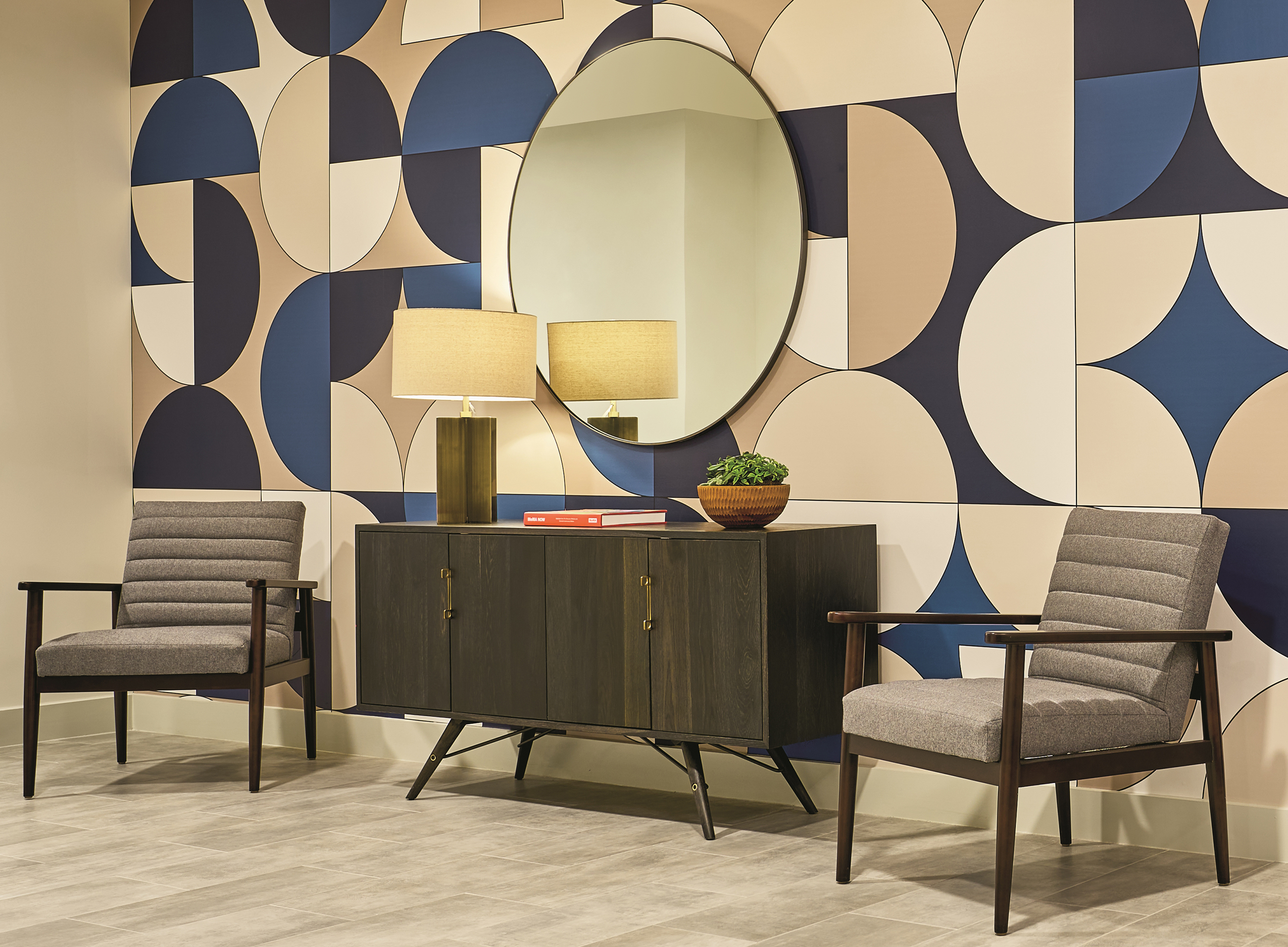
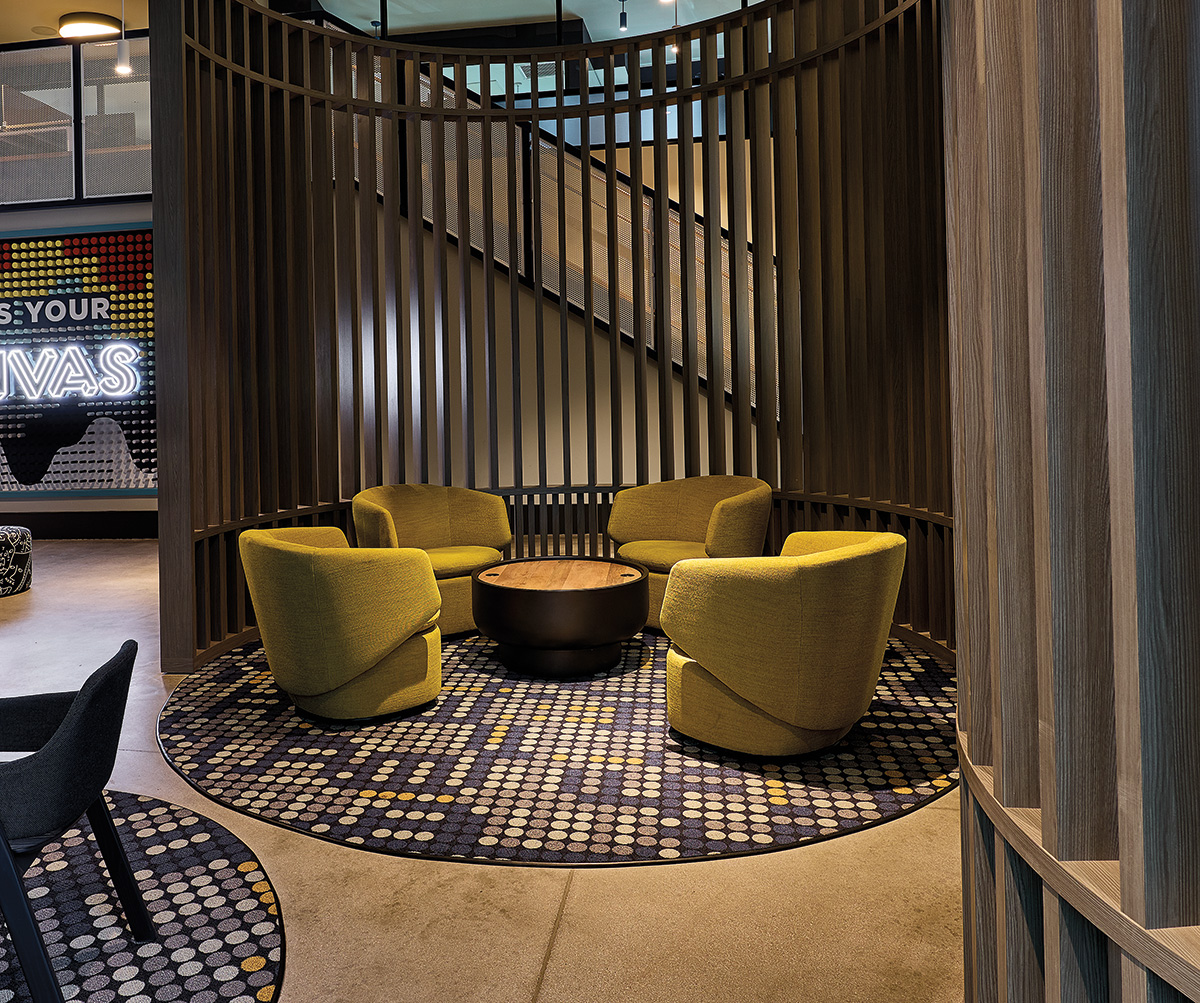
THE PERFECT PAIRING
Salt and pepper. Peanut butter and jelly. Mac and cheese.
Some things just work together. There's something interesting, even magical, that happens when certain things are paired together.
In the interior design world, it's pattern and texture. They're two powerful design tools that work like the seasonings of a great recipe. The sixth principle of our 7 Fundamentals of Design, they're the spice, the accent that allows you to fine-tune all the layers of design. They have the power to guide it. They can elevate effect or subdue a mood. They can maximize impact or sooth the senses. They're the final flavor that brings a design into perfect harmony. But what's really great about them is that they're abundant and cost-effective.
Humans are visual beings characterized by the ability to recognize and appreciate beauty. Prehistoric rock and cave art indicates early civilization's desire to depict a visually pleasing, aesthetic experience. While 'aesthetics' can be considered an ambiguous concept, its power in humanity's everyday existence is increasingly attracting research attention.
Researchers are discovering that aesthetic images can transform everyday life through appreciation of the beauty and design of objects and spaces.1 Aesthetics invite a multi-layered response including inducing significant physical changes. They can profoundly lower stress levels which we know can help reduce loss of productivity at work and boost physical and emotional health. As the correlation between aesthetics and well-being gains ground, researchers are interested in understanding just what makes beauty found in some art visually appealing and stress relieving.2 One crucial factor is the presence of repetitive patterns called 'fractals.'
Researchers are increasingly using sophisticated techniques to quantify aesthetics, and the impact on the observer
-MARY COOK | FOUNDER AND PRESIDENT
FRACTALS
The science of pattern
Benoit Mandelbrot, a mathematician, coined the term fractal in 1975 to describe patterns and shapes that nature repeates in flowers, trees, plants, and even mountains and coastlines. He defines a fractal as 'a rough or fragmented geometric shape that can be split into parts, each of which is (at least approximately) a reduced-size copy of the whole.'3
A fractal is a pattern that the laws of nature repeat at differing scales. Trees are natural fractals with patterns that repeat smaller and smaller copies of themselves to create a forest. Every tree branch, from top to bottom, replicates the one that came before it. This basic principle can be seen over and over again throughout all organic life forms from ferns and pine cones to seashells and river deltas.
Nature's aesthetics are surprisingly beneficial. A study conducted in the 1980's found that patients recovering from surgery in rooms with windows looking out on a natural scene had shorter hospital stays and needed less pain relief than those without a window.4 Researchers wondered if fractals were responsible. In collaboration with psychologists and neuroscientists, they measured people's responses to fractals found in nature photographs, Jackson Pollock paintings, and computer generated images.
Nature knows best
They discovered a universal effect called 'fractal fluency.' This neuroscience model claims that exposure to nature’s fractal scenery has allowed human's visual systems to efficiently and easily process fractals. This fluency puts us in a comfort zone. And it doesn't just reduce stress. It reduces mental fatigue. It's why we enjoy looking at fractals. It's why art through the ages and across cultures – from Roman, Egyptian, Aztec, Incan and Mayan works – artists embedded fractal patterns in their works.
As the field of research into fractals grew, the ScienceDesignLab formed in 2017 with a mission to create science-informed, human-based, fractals for application in the built environment.5 The lab features an international collaboration between the Fractals Research team in Eugene, Oregon, which uses software to generate and analyze patterns, and 13&9 Design team in Austria, which developed fractal patterns. Their Fractal Library collection includes patterned designs for a ceiling, curtain and perforated screen, window blinds, wallpaper print, glass film and flooring.
The biophilic design movement is another indicator of how the built environment is encompassing nature-based elements for human benefit. Vast research findings indicate that incorporating materials and imagery that draw from nature produce the significant improvements to well-being.
Art is the imposing of a pattern on experience, and our aesthetic enjoyment is recognition of the pattern
-ALFRED NORTH WHITEHEAD, 1861-1947, BRITISH PHILOSOPHER AND MATHEMATICIAN
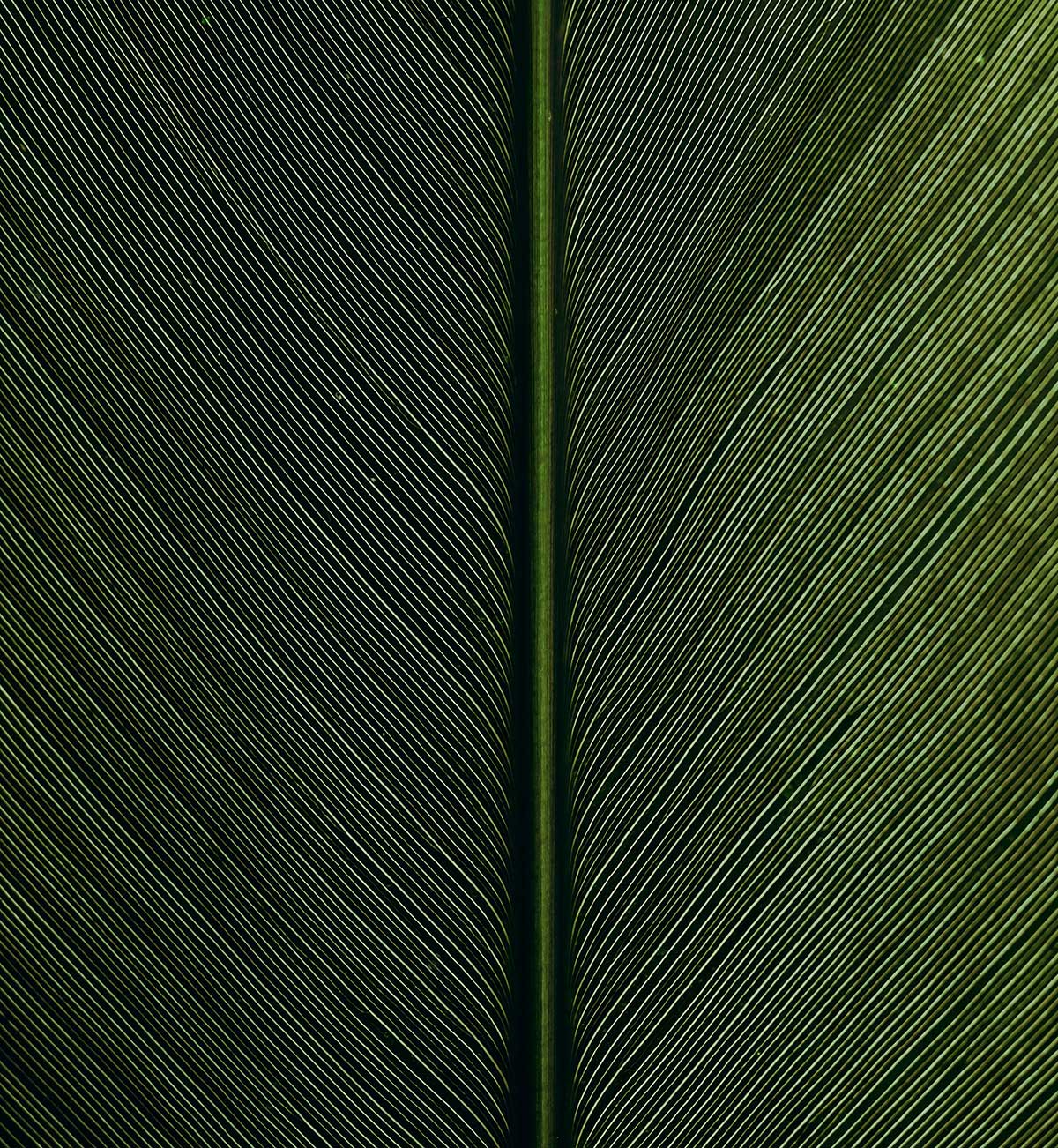
Fractal fluency allows us to enjoy an aesthetic experience by processing nature’s patterns efficiently
-MARY COOK
PATTERN IN DESIGN
A basic component of art, and of the universe for that matter, a pattern is simply an element, or a group of elements, that is repeated. Artists use patterns as decoration, as a technique of composition, or as an entire piece of artwork. Patterns are diverse and useful as a way to grab the viewer's attention. It doesn't matter if it's subtle or blatant. Patterns are innate parts of design that attract and mesmerize the viewer. Pattern recognition is an inherent, human quality and is a fundamental function of the human brain. And identifying patterns tends to have a soothing effect on the viewer.
And, though we've been discussing visuals, there are also patterns in sound and smell that allow us to quickly understand our environment. Pattern recognition is what allows us to do everything from recognizing people and their emotional states to solving jigsaw puzzles, to sensing when a storm is coming.
Because of the way patterns involve our senses, they satisfy and intrigue us.
-JOSH KASSING, SENIOR VP
NATURAL ORGANIC BIOPHILIC PATTERNS
In nature, patterns don't follow a standard of rules. Snowflakes nearly always have six sides, but each separate snowflake has a pattern that is different from every other snowflake. A natural pattern can also be broken up by a single irregularity. For instance, a species of tree may have a pattern to its branches, but that doesn't mean every branch grows from a designated spot. Typically, patterns found in nature have a lot of circles and curves and have a soothing effect because their lines are smooth and without angles.
FORMS OF PATTERN
In addition to nature's patterns, we love man-made patterns, whether they're as obvious as Andy Warhol's repeated images of Marilyn Monroe, or have to be parsed out, like Pollock's seemingly random splatters. Patterns can be found everywhere and depending on their size, color, and type, the effects on those who experience them can vary wildly.
FLORAL, STRIPED AND GEOMETRIC PATTERNS UNIQUELY ENRICH INTERIOR SPACES.
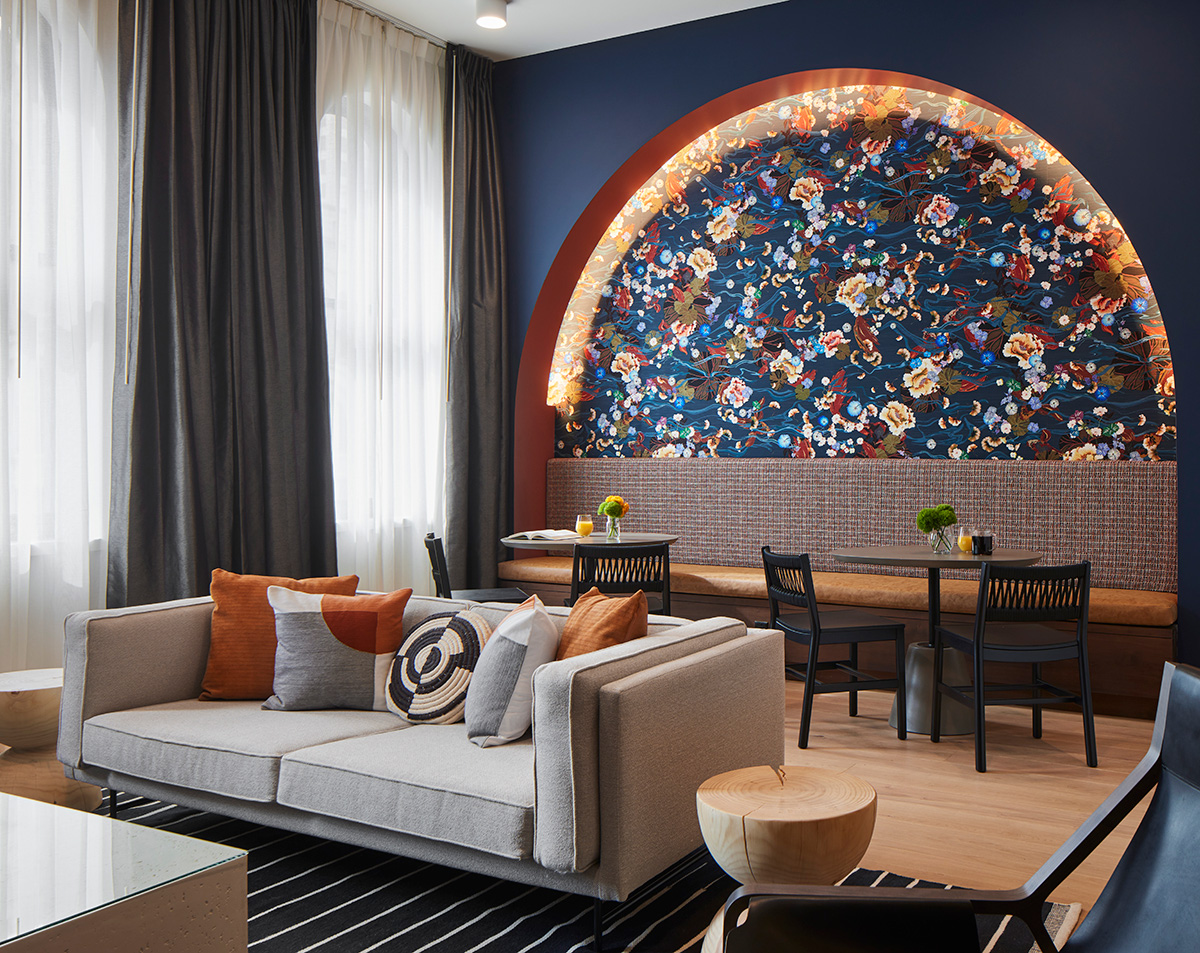
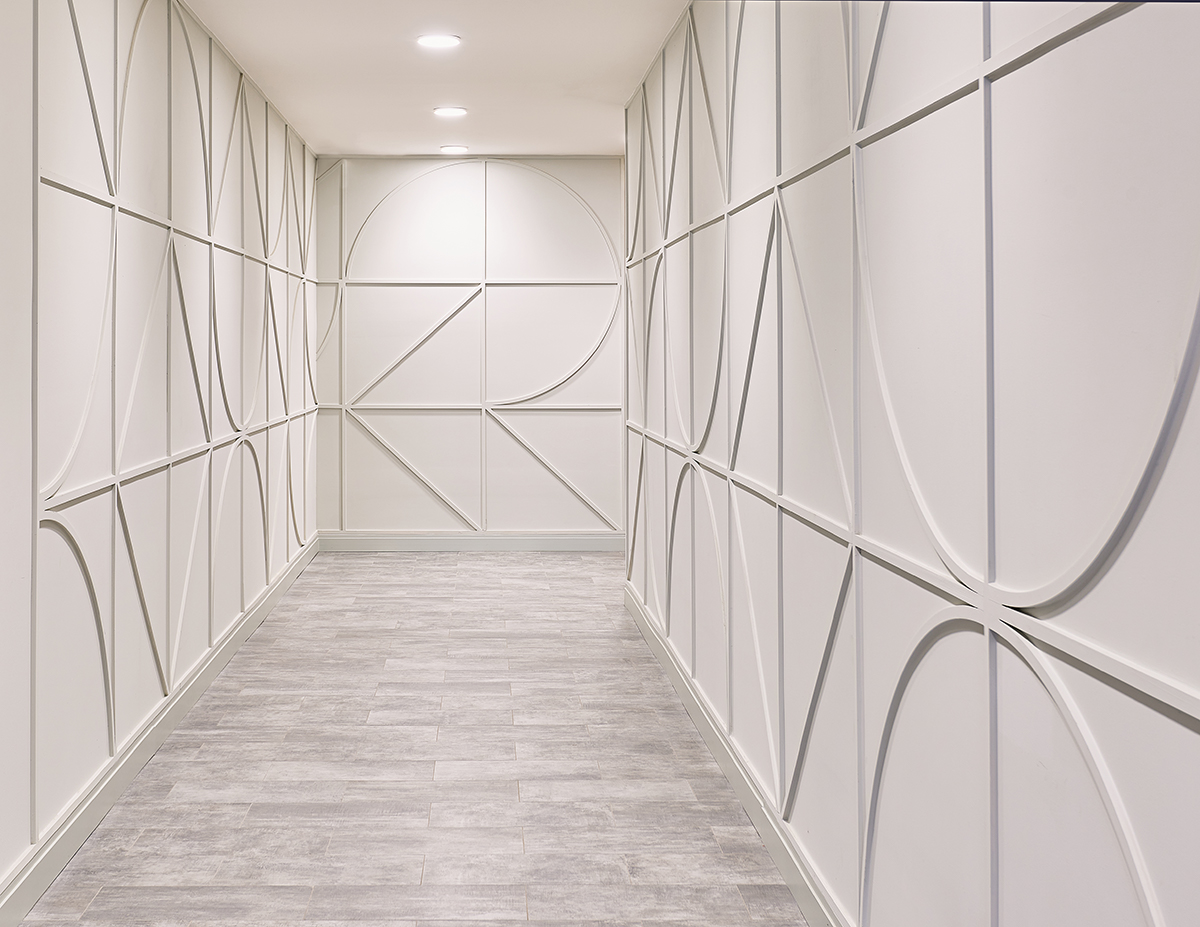
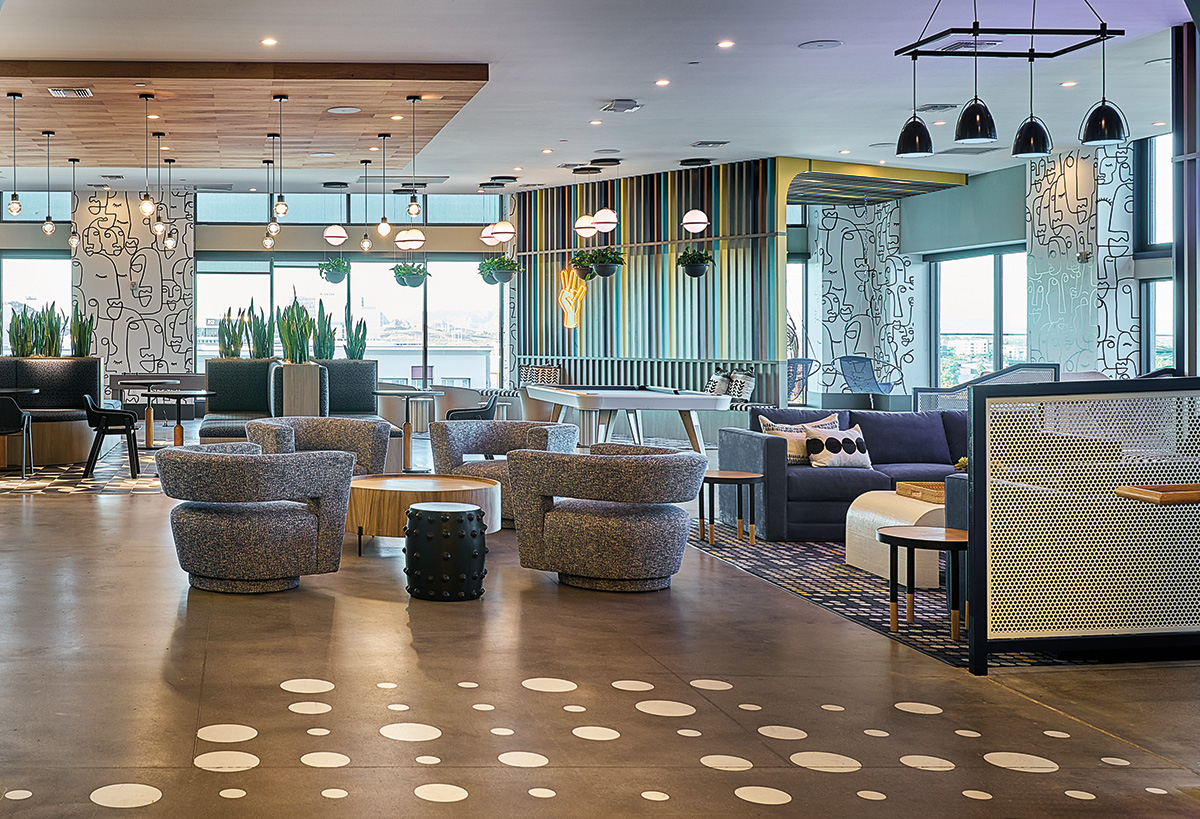
MAN-MADE PATTERNS
On the other hand, man-made patterns tend to strive for perfection. A checkerboard is easily recognizable as a series of contrasting squares drawn with straight lines. If a line is out of place or one square is red rather than black, our perception of that well-known pattern is challenged.
Stripes
A stripe pattern consists of seamless, continual lines or bands in either a horizontal, vertical or diagonal direction. Variations in the width of the stripes, how they are arranged, spaces, scale and color and combination of colors contribute to the versatility of stripes. Awning stripes, Regency stripes, Pinstripes, Navy Stripes and Candy Cane stripes are just a few of the classic stripes we see every day.
Polka Dots
The polka dot is a pattern consisting of equally-sized, and evenly distributed circles. Typically used for a cheerful, whimsical effect, polka dots can make a strong statement as well as work as a blender in a collection.
Geometric
Bold and energizing geometrics make a statement in anything from a living room interior to flooring and furniture. Combinations of points, lines, surfaces, forms, shapes and angles create geometric designs that can be either two-or-three-dimensional. Geometrical patterns inspire many interior design forms including art deco, mid-century and contemporary.
Nature Inspired
The unique patterns found in plants and wood can revitalize any space. And, while floral patterns can be challenging to implement, they can add visual interest and appeal even in modern interior design. A medium-sized pattern in fresh and light tones creates a soothing effect. A larger-scale floral with bold and vibrant color delivers more impact and energy. A highly concentrated color and pattern mixed together in a unique or unexpected way heightens emotions.
Sense and Sensibility
IRREGULAR PATTERNS IN ART AND DESIGN
Our minds tend to recognize and enjoy patterns. But what happens when that pattern is broken? The effect can be disturbing, and it will certainly catch our attention because it is unexpected. A broken pattern can have great impact.
In design, pattern has been used for centuries in organizing and decorating surfaces, defining spaces and areas, adding impact, and delighting human aesthetic senses. Thousands of ready-made pattern styles exist and are available for licensing or customization through online Pattern Library sources.
PATTERN AND TEXTURE
When a pattern is produced in scale, it becomes texture. Our perception of textures is affected by three things: distance, scale, and light.
Our perception of texture is diminished when we see it from a greater distance.
On a large scale, a highly contrasted pattern can stand alone, as a highly impactful, bold feature. But, take a small-scale pattern that has minimal contrast and from a few feet away it reads as texture.
Texture refers to the visual quality of natural or artificial materials. It's defined by sight, (how it looks), touch (how it feels), and functionality (how it works). Texture in art, architecture, and interior design contribute greatly to the quality of human life. And, it plays an essential role in building materials. A material's durability, usability, and penetrability rely on the surface texture. Texture contributes to the physical comfort in our surroundings.
Textures can be rough or smooth, dull or shiny, flat or dimensional, dark or light. Smooth textures seem cold. Rough textures project warmth. Both the visual appearance of textures and their durability and workability are critical contributors to great design and the built environment.
Visual Appearance
The visual appearance of a texture depends on the surface color and texture. Smooth, highly polished surfaces reflect light and other objects creating additional visual interest. On the other hand, rough textures such as clay, wood, and stone absorb light creating a warmer, cozier feeling.
Tactile Durability
Slightly textured finishes are generally more durable than smooth ones. The maintenance of a material also depends on the surface's texture. Smooth surfaces easily show footprints and dirt, but their smooth surface makes cleaning easier. With rough surfaces, dust is better hidden in the texture, but cleaning is harder.
Functionality
Texture also impacts its functionality. For instance, the rough surface of a plaster wall helps conceal seams and joints. And textured surfaces can control the flow of rainwater and act as non-slippery surfaces. Sound dampening composite panels and perforated surfaces offer good sound-absorption properties because of their open texture. And the texture of flooring material influences how we walk on and feel about the surface.
Types of textures
VISUAL TEXTURE
how it looks
TACTILE TEXTURE
how it feels
FUNCTIONALITY
how it works

THE RIGHT COMBINATION OF PATTERNS AND TEXTURES CREATE AN OPEN VIBE THAT FOSTERS RELAXATION AND SOCIAL ENGAGEMENT.
Light Impacts Texture
Textures are one of the essential considerations in designing lighting. They have a dramatic effect on the spaces we create. Textures also determine a surface's ability to reflect or absorb light. The use of concentrated light and shadows can emphasize texture.
+ Direct light on the texture enhances it, whereas diffused light emphasizes the surface finish.
+ Directional light creates distinct shadows and creates a sturdy contrast that showcases a material’s texture.
+ Diffused light, like overhead florescent lamps, tends to soften textural qualities.
Pattern and texture – the spice of interior design. Effective use of pattern and texture elevate design beyond decoration. When we understand how they work together, and how they can inform the mood and well-being of the people who experience them, we can take design to a whole new level. We can actually help people maximize their potential, feel their best, and do their best. We can help people thrive in the spaces we create. And that's even better than peanut butter and jelly.
GET THE PDF VERSION HERE
MEET THE AUTHORS

Mary Cook, Founder and President
Mary Cook is the founder and president of Mary Cook Associates (MCA), a fully integrated interior architecture and design firm nationally known for creating innovative interiors that are targeted to market demands, designed to increase property value and deliver measurable returns. The firm's projects for premier owners and developers of real estate include multi-family, model homes, student living, senior living, clubhouses, restaurants, and hospitality environments. Under Mary's leadership, the work MCA produces emphasizes functionality, showcases possibilities, and accelerates sales and leasing. Currently celebrating its 35th anniversary, the firm continues its national presence with award-winning work that spans 36 states.

Josh Kassing, Senior Vice President
Josh Kassing brings unbridled enthusiasm and experience to his leadership at MCA. He champions design teams to deliver highly engaging, human-centered environments while bridging creative results with forward-thinking business development. His energetic personality coupled with successful relationship-building and development of strategic initiatives, positively influences the firm's growth trajectory.
As Senior Vice President, Josh focuses on expanding existing client relationships to include additional business divisions and geographic markets. He also leverages his creative vision and keen ability to recognize opportunities that are ahead of the industry curve to obtain new clients in a variety of sectors and product types.
Watch for our next white paper
on the great enhancers – pattern and texture.
1. 'Introduction to Special Issue: Uncovering the Potential of Aesthetics and Design to Transform Everyday Life,' Vanessa M. Patrick, Laura A. Peracchio, and Claudia Townsend, The University of Chicago Press Journals, https://www.journals.uchicago.edu/doi/full/10.1086/705027
2. 'Fractal patterns in nature and art are aesthetically pleasing and stress-reducing,' Richard Taylor, PhysOrg, March 31, 2017, https://phys.org/news/2017-03-fractal-patterns-nature-art-aesthetically.html
3. 'Fractals in Nature Develop your Pattern Recognition Skills,' Kyle Pearce, November 4, 2018, DIYGENIUS, https://www.diygenius.com/fractals-in-nature/
4. 'View Through a Window May Influence Recovery from Surgery,' Roger S. Ulrich, April 27, 1984, https://www.science.org/doi/10.1126/science.6143402
5 'Fractal Fluency in the Built Environment,' https://bpb-us-e1.wpmucdn.com/blogs.uoregon.edu/dist/e/12535/files/2016/02/ScienceDesignLab_Fractal-Fluency_Educational-Booklet2.pdf5.


